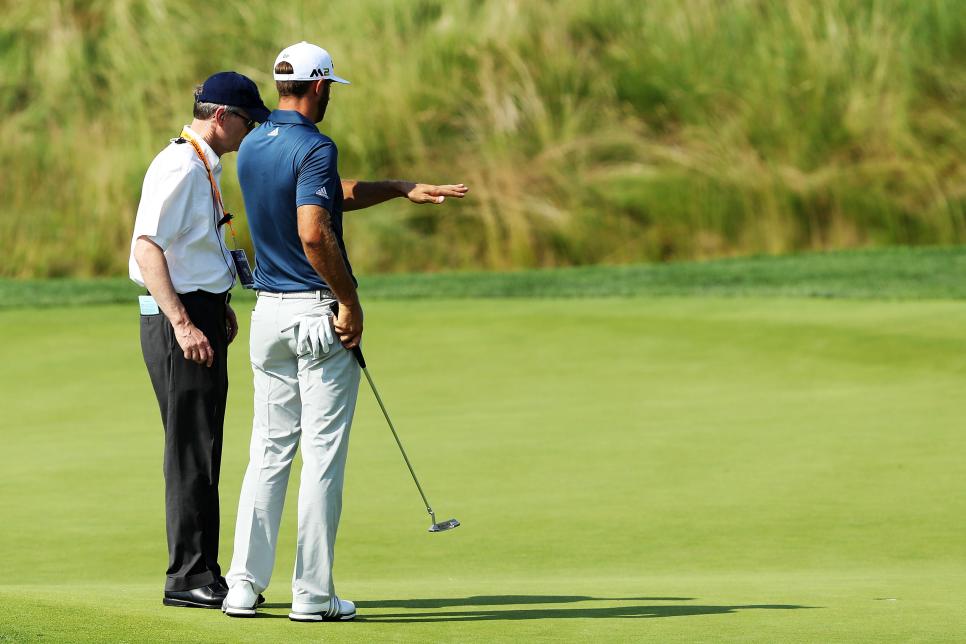News
Finally, a Rules change we absolutely love

David Cannon/Getty Images
One of golf’s most unjust rules is finally going to change. Effective Jan. 1, courses and tournament committees can enact a Local Rule that says if you, your caddie, your partner or your equipment accidentally move a ball or ball marker on the putting green, there is no penalty and the ball should be replaced.
This Local Rule, which was announced jointly by the USGA and R&A, also applies to your opponent or opponents in match play, the other side’s caddies and equipment.
You read that right. Rules-makers did something really, really good for the game.
“We’re golfers, too, and when we saw players penalized for minor movement of a ball on the putting green, it didn’t sit well with us,” says Thomas Pagel, senior director of the Rules of Golf and amateur status for the USGA. “I do hope people are excited about the change and it’s well received.”
Pagel added he could envision a time when this Local Rule becomes a permanent one—such as when the next revisions to the Rules of Golf go into effect in 2020—but “I’m not going to guarantee anything,” he says.
The reaction from professional tournament organizers has been extremely positive. All the major pro tours, and the Masters, have confirmed they will use the new rule in 2017.
It was created, in part, as a reaction to the messy rules situation that impacted Dustin Johnson during the U.S. Open at Oakmont in June, but Pagel says it was being considered prior to that. Johnson, who won the championship, was deemed to have accidentally moved his ball on the fifth green in the final round, and received a one-stroke penalty, although video evidence seemed inconclusive and Johnson said he didn’t cause it to move. The way Rule 18-2 and Decision 18-2/0.5 are worded, if the weight of evidence indicates it’s more likely than not that a player caused the ball to move, then the penalty must be assessed. In Johnson’s case, the USGA said there was no other reason more likely than Johnson that caused the ball to move.
If this new Local Rule is not enacted, Rules 18-2 (ball at rest moved by player, partner, caddie or equipment), 18-3 (ball at rest moved by opponent, caddie or equipment in match play) and 20-1 (lifting and marking) would still apply. Those rules specify a one-stroke penalty for moving a ball or ball marker, unless they were moved accidentally in the act of marking or lifting a ball under a rule. Then there is no penalty. In any of these scenarios, the ball or ball marker must be replaced.
Keep in mind that this Local Rule only applies if a ball is on the green—by definition, when any part of the ball is touching the putting surface. Also, if the ball should move on the green as a result of wind, water or some other natural cause such as gravity, the ball must be played from its new position. A ball marker that moves as a result of strong winds, etc., should be replaced.
While it might seem highly unusual to fast-track a change in between the usual two-year and four-year cycles of adjustments to the Decisions on the Rules of Golf and the Rules of Golf, it’s the third time in the past eight years this has been done to rectify an unjust situation. In 2008, after Stewart Cink was disqualified for having a bunker raked when his ball rested in another bunker, the rule was altered to allow for the “tidying” of bunkers regardless of where the ball was resting. And in 2011, a new decision allowed tournament committees to override an automatic-disqualification penalty for players who signed a scorecard that didn’t include penalty strokes unknown to the golfer at the time he or she signed.


